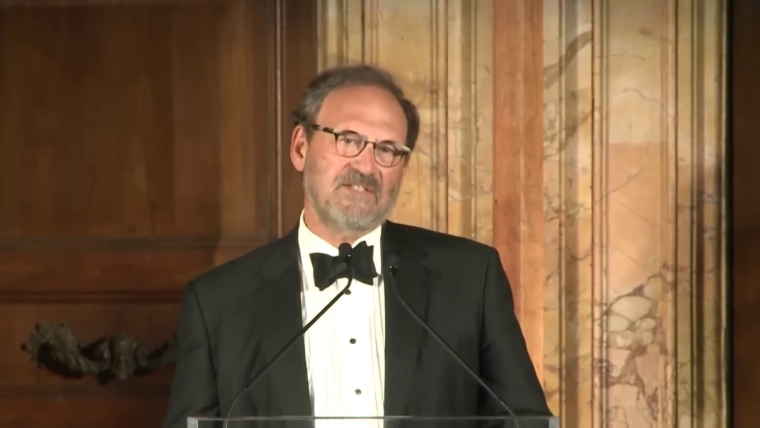Chief Justice John Roberts and Justice Elena Kagan, perhaps more than their colleagues, are acutely aware that the Supreme Court may be hurtling toward catastrophe. They know that if the court is viewed as illegitimate, it loses its authority.
If we lose faith in the court, it has no power to make us adhere to its decisions.
Indeed the court, and therefore our system of checks and balances, is in crisis, facing historically low approval ratings. That matters because the court lives or dies on its ability to command our respect. As Alexander Hamilton noted in the Federalist Papers, judges have “no influence over either the sword or the purse.” If we lose faith in the court, it has no power to make us adhere to its decisions.
Roberts and Kagan are not alone in openly worrying about the future of the court. The last of Donald Trump’s three nominees to the Supreme Court, Justice Amy Coney Barrett, voiced concern that the court is viewed as a partisan government body. Of course, Barrett’s nomination and confirmation did nothing but fan the flames of this perception problem. Trump nominated Barrett on the eve of the 2020 presidential election and she was confirmed after early voting had already begun. This happened four and a half years after Barack Obama nominated Merrick Garland to the Supreme Court, and Sen. Mitch McConnell and his colleagues denied Garland a hearing. As a result, a Supreme Court seat stood vacant for almost a full year. At the time, McConnell said Garland would not even have a confirmation hearing because it was too close to the presidential election.

Obama nominated Garland in March 2016, eight months before the 2016 election. Trump nominated Barrett in late September 2020, five weeks before the 2020 election.
As many of us suspected, Roberts tried desperately to find a middle ground to prevent the Supreme Court from overturning Roe v. Wade, the case which explicitly held that the right to an abortion is protected by the Constitution. He failed. Kagan spoke at a judicial conference and delivered the message that judges must act like judges, not politicians. Both are acts of justices trying to keep the Supreme Court from sinking. Roberts is looking for gum to plug the holes, while Kagan is searching for buckets to throw the oncoming water overboard.
CNN’s Joan Biskupic wrote that Roberts tried and failed to garner the votes for a middle-ground approach that would have upheld Mississippi’s 15-week ban on abortions, but also leave the right to obtain an abortion as protected by the Constitution untouched. Roberts’ efforts died when the draft opinion of the Dobbs decision that overturned Roe was leaked to the press. Roberts almost certainly wanted to torpedo Roe. But, unlike his conservative colleagues, he didn’t want to sink the Supreme Court in the process, and therefore likely preferred to wait a few more years before erasing abortion protections from the Constitution.
Roberts is looking for gum to plug the holes, while Kagan is searching for buckets to throw the oncoming water overboard.
As Roberts said in 2006, "If it is not necessary to decide more to a case, then in my view it is necessary not to decide more to a case." He wants to get to the same place as the other five conservative members of the court; he just wants to get there more slowly so that the court looks like it is deciding cases as opposed to pushing personal views.
Roberts knows it’s a bad look for the court to create major changes in the law because its membership has changed. But the law on abortion rights did change because the composition of the court changed. The court overturned Roe because it had the votes to do so after Justice Ruth Bader Ginsburg died and Trump filled her seat with Barrett. If Biden had filled Ginsburg’s seat, Roe would almost certainly still be the law of the land. Justice Sonia Sotomayor hammered on this point during oral arguments in the Dobbs case back in December 2021, when it became clear the court was poised to overturn Roe. “Will this institution survive the stench that this creates in the public perception that the Constitution and its reading are just political acts? I don’t see how it is possible,” Sotomayor said.

And this brings us straight to Kagan’s urgent warning about the legitimacy of the court. Maintaining that legitimacy does not mean agreeing with public sentiment all of the time. It is a feature, not a bug, that the judiciary will sometimes make decisions that are unpopular. We want them to do this. Really, we do. It is the court’s job to make sure that our politician branches are not trampling on individual rights and/or the rights of unpopular minorities. But, as Kagan explicitly stated in her remarks, neither can the court become entirely unmoored from public sentiment.
Kagan didn’t just speak in platitudes or wax poetic about the importance of maintaining public confidence in the court. She gave us, and her colleagues, a roadmap for how to do that.
First, the court must, whenever possible, adhere to its prior decisions. This is known as respect for the doctrine of stare decisis. If the court respects its prior decisions, the court appears to be, well, acting like a court, instead of a group of people who are trying to ram their political or partisan preferences down our throats. Second, justices must pick a methodology and stick to it, regardless of whether that justice personally likes the outcome of a decision. Kagan’s point here is that you can wake up and be a textualist on Tuesday and then an originalist on Wednesday because that allows you to get to your desired outcomes. Third, the court should remember that slow and steady wins the race. The court must decide only the issues before it, no less, and certainly no more. These cases may allow justices to get to their preferred conclusions more quickly, but it also makes the justices look like political actors eager for a win, as opposed to judges deciding cases.
The waves are getting higher. The ship is getting leakier. And we are damn near out of life vests. We are no longer nearing a crisis in confidence regarding the Supreme Court — we are already there. Our government depends on three functioning branches of government. The court should follow Kagan’s, and to an extent Roberts’ lead, and try to reclaim its legitimacy before it just becomes a sunken relic.

